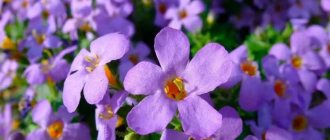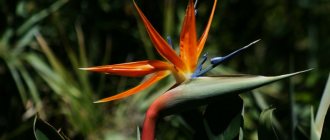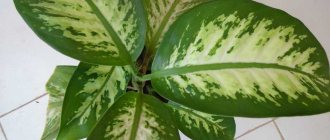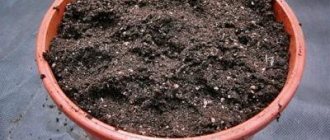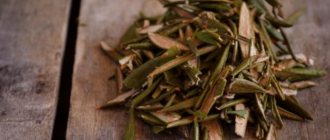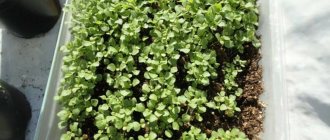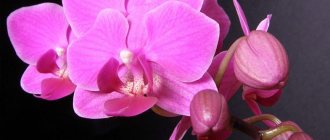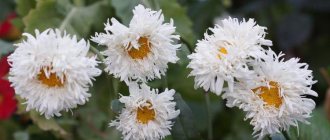Bacopa (another name for Sutera) is a beautiful and unpretentious hanging herbaceous plant with flexible, hanging, creeping shoots. The plant is perennial, but in our conditions it will not be able to survive the winter, so you need to store the plant for the winter. A densely flowering plant strewn with inflorescences of small diameter. Flowering throughout the summer until frost, it lasts in waves (after attenuation it resumes). The shoots of the plant can reach a length of up to 0.6-1 meter. Growing bacopa is possible in open ground (as a ground cover crop), and in a container in the garden, on the balcony, and at home as a houseplant.
Sutera is grown as an ampel or ground cover plant, creeping along the ground.
It is best to grow the crop in a container so that the shoots can hang beautifully. Thanks to the falling flowers from a flowerpot or hanging flowerpot, the bush looks like a colorful, delicate cloud.
If you want to start growing a wonderful plant, you can propagate it through seedlings. Hybrids “Snowtopia” (with white flowers) and “Blutopia” (purple, lilac inflorescences) are grown from seeds.
Description
Bacopa (sutera) cordata
Bacopa (sutera) is an aquatic or semi-aquatic plant that is successfully grown in open flower beds, in flowerpots, on window sills, in ponds and aquariums. The birthplace of this unusual flower is South Africa; some varieties are found in the Canary Islands. In some countries the plant is called bakote or bakola.
Ampel varieties can reach 70 cm in height, aquarium varieties grow up to 40–45 cm, succulent varieties from 30 to 50 cm.
The crown of bacopa is branched, so to make it more decorative it is necessary to carry out formative pruning. But as you can see in numerous photos, the natural growth of branches looks very original.
Aquarium bacopa
The petals are soft or rich green in color, round in shape, depending on the variety, dense, fleshy or thin and lacy. They grow in pairs or are located on a branch of 5-10 pieces. The stems of ampelous species are dense and flexible, while the stems of aquatic species are delicate, but quite strong.
The ampelous bacopa flower is well suited for landscaping garden recreation areas, verandas, loggias, open balconies and entrance areas. Bush and herbaceous varieties look great when planted in groups in flower beds, and aquatic varieties ideally complement aquarium decorations, allowing you to create a unique underwater corner in your apartment.
Abundant and friendly flowering of bacopa
Small buds bloom almost simultaneously. The duration of the first wave is short, but new buds appear to replace faded buds, so the bush blooms almost continuously.
The buds open only during daylight hours and close at night.
The flowers are formed from five rounded petals. The surface can be smooth or terry.
Terry bacopa
The most common is Bacopa Raphael, whose flowers are white. Less commonly, you can find the blue bacopa variety or varieties with pink or pale purple petals.
Typically, gardeners choose the bacopa snowtopia variety for planting on balconies and verandas. This species is quite unpretentious, about 63 cm in height. Blooming snowtopia looks like a snowball of snow-white flowers.
Another popular annual variety of bacopa is bluetopia. The variety is distinguished by its light-loving nature and lush flowering.
It is worth considering that the absence of sun causes the plant to stretch out, so it will not have the strength to form buds.
The flowers are blue, light blue or purple, the leaves are pale green. The height of an adult bush is up to 58 cm.
Brief information about the plant
Bacopa is a plant of the Plantain family; it can also be found under the names Sutera, Blutopia, and Henostoma cordata.
The plant has a creeping form, the stems reach a length of 60 cm, the leaves are small. Flowers are no more than 2 cm in diameter, solitary, and have 5 petals. There are specimens of white and blue-blue color, less often purple, lilac and pink. The flowering process is long and wave-like. The hanging (hanging) varieties are especially beautiful.
Types and varieties of bacopa
Breeders have developed more than 55 hybrid varieties for growing at home. Among others, gardeners distinguish the hybrid species Bacopa bluetopia with white buds and Bacopa Vasilisa with a delicate lilac color. According to reviews, the most common variety is considered to be ampelous bacopa, but succulent species are more often grown in the house on window sills, and aquatic varieties of bacopa (sutera) are grown in aquariums. This article provides a description of the most popular varietal varieties with photos.
Australian bacopa bacopa australis
Aquarium bacopa.
Photo This is an aquarium variety that is used to create underwater compositions and decorate ponds and artificial reservoirs.
Australian bacopa is a fast-growing species that can grow from a small sprout to a lush thicket in a short time.
The plant has a powerful root system and bright green leaves. The shape of the leaf blades is ovoid, length from 1.5 cm, width from 1.1 cm. The flowering period is quite long and often falls in the summer. Small blue flowers bloom above the surface of the water.
Bacopa caroliniana bacopa caroliniana
One of the most popular aquarium varieties. In its natural environment it is found in flooded fields and shallow reservoirs. Height is from 16 to 52 cm. The plant is unpretentious and grows well in a shaded pond or a regular aquarium.
The stems are rigid and poorly branched, the shoots are vertical. The leaves are dense, from 1 to 2.3 cm in length, oval-oblong in shape.
The color of the foliage in the sun becomes reddish, and in the shade it remains green.
The buds are not large, deep blue in color.
The bacopa plant tolerates transplantation, temperature changes and poor lighting well. The variety is often used to decorate ponds, fountains, alpine slides and other decorative objects in private gardens or public parks.
Bacopa monnieri bacopa monnieri
This is an unusual succulent species that is quite easy to grow in an aquarium or in a deep planter. The main thing is that the root system of the plant is in water and does not dry out. In its natural environment, Bacopa monnieri is considered a weed; it often grows in rice fields and causes a lot of trouble for farmers.
At home, the height of an adult bush is from 30 to 48 cm. The shoots are creeping and strong. The leaf blades are without stems and grow directly on the branch. The shape of the leaves is round or oval, slightly elongated towards the edge. The edge of the plates can be smooth or jagged. The flowers are pale blue, reddish or snow-white.
Bacopa diffuses
This perennial bacopa is often called “beautiful” and is used to decorate balconies, verandas and gazebos. The length of the hanging shoots is 53-65 cm, the crown is lush with dense green foliage.
The plant withstands rainy and dry weather.
The flowering is bright and lush. The diameter of the opened buds is up to 3 mm, the color is white, pinkish or blue.
Bacopa cordata
This is a perennial crop of herbaceous type. It is easily propagated by seeds and is unpretentious. The height of an adult plant is from 11 to 22 cm. Bacopa heart-shaped blooms with snow-white, light purple or pink buds. The foliage is rich green, the crown is dome-shaped.
Bacopa for aquarium. Video
Features of growing at home
Growing bacopa is a fairly simple and interesting process. But it should be borne in mind that the culture loves water and sunlight, so it is necessary to follow the watering schedule and place the flowerpots on well-lit windowsills.
For proper growth and development, the sutera should be in the sun for about 10–12 hours a day. In winter, it is necessary to illuminate the flower with special lamps.
Do not place a flower pot near heating systems or other heating devices.
You need to choose a place where there are no drafts or other irritating factors.
Bacopa grown at home from seeds is transplanted into open ground in the summer, and brought indoors in winter. The temperature in winter should not be higher than +8 +15 °C. During this period, bacopa is at rest, gaining strength for spring growth.
It is best to start growing bacopa from seeds, a photo of which is in the article, in early spring. It is during this period that you can grow a strong and healthy flower, which by autumn will be able to please its owner with abundant flowering.
Hanging pots or flowerpots are suitable for planting plants with hanging shoots.
The pot must have drainage holes, since some varieties, although they are moisture-loving, do not tolerate stagnation of water at the roots.
Boarding rules
In addition to the sun's rays, the basic rules include sheltering flowers from winds, which not only adversely affect the plant, but can also disturb it so much that the flower dies.
As a rule, planting bacopa should be no closer than twenty centimeters from each other. But there are more compact varieties, then a distance of ten centimeters will do.
How to plant in open ground
In order for bacopa to grow and develop better in the garden, you need to choose a well-lit area where there is no piercing wind, drafts and stagnant humidity.
It is important to remember that poor lighting will lead to elongation of shoots, and flowering will be faded and short-lived.
Sutera is not demanding on soil composition and grows well in almost any area. The main condition is that the soil has good air and moisture permeability and is also saturated with nutrients. To do this, gardeners recommend adding humus, compost and other rotted organic matter to the soil.
Before planting seedlings in a permanent place, gardeners recommend hardening off the sprouts. This will help them get stronger and in the future easily tolerate temperature changes, rainy days and wind. Seedlings are planted in open ground only after the threat of return frosts has passed.
Top dressing
The most preferable soil for bacopa is a slightly acidic soil. It should additionally include some elements:
- Leaf soil
- Humus
- Peat
- Sand
If cultivation occurs in containers like pots, then drainage must be laid out at the bottom.
The soil should always be kept moist. During moistening, you need to add a special solution containing mineral fertilizers.
Bacopa does not require any special fertilizer. It is important that the soil contains its essential elements.
How to properly care
Sutera is not a demanding plant, so even a beginner can cope with its cultivation. Bacopa care includes regular watering, fertilizing, weeding, loosening the soil, and preparing for the winter. By following simple care and growing conditions, you can achieve abundant flowering already in the first year after sowing an exotic crop.
Watering
Bacopa needs to be watered regularly and abundantly. But the plant does not tolerate stagnant moisture, so flowerpots and pots must have drainage holes.
When planting at the bottom of a hole or flowerpot, it is necessary to add a drainage layer of broken brick or expanded clay.
Top dressing
Bacopa, like other plants, can be fed only in spring and summer. With the onset of cold weather, all feeding is stopped, and the flower is prepared for the winter period. For feeding, organic fertilizers are usually used, such as mullein solution, compost, diluted bird droppings or vermicompost.
During the growth period, it is advisable to apply nitrogen-containing fertilizers. And during flowering, the plant is fed with mineral complex compounds that contain potassium, phosphorus, iron and magnesium.
Wintering
Bacopa flowers tolerate short frosts well, so in warm climate zones it will be enough to build a shelter from hay, burlap or spruce branches. But in cold regions, perennials are best dug up and moved indoors.
Preparing for the winter period:
- To do this, the bushes are pruned, removed from the flowerbed along with a lump of earth and transplanted into a flowerpot.
- The storage temperature should not be lower than +10 and higher than +15 °C.
- The room should be shaded.
- Check the soil and, if necessary, moisten it a little so that the roots do not dry out.
- Closer to spring, the flower is transferred to a warm room and watered.
- After the plant forms its first shoots, cuttings are taken from them for propagation.
The mother bush is planted in a flowerbed when the earth has warmed up and the threat of spring frosts has passed.
Rules of care
Despite the fact that bacopa is native to South Africa, it is resistant to bad weather conditions, so it can be grown in any climate zone. The main requirement for placement is good lighting. In partial shade, flowering is worse and may stop altogether.
Bacopa loves high humidity, so water it generously every day. If the weather is hot, watering is carried out twice: in the morning and after sunset. When the plant gains green mass, it is sprayed twice a day every day until the buds appear.
To increase foliage during the growing season, the crop is fed with fertilizers containing nitrogen and potassium. Magnesium and manganese are also needed. Root feeding with mineral and organic fertilizers is carried out in the form of solutions every week from March to October. Then the bushes rest, and in February-March they are rejuvenated by cuttings.
Reproduction methods
For propagation at home, two methods are used: growing bacopa from seeds and propagating bacopa from cuttings. Despite the exotic past of the culture, the propagation of bacopa is not a complicated and quite exciting process.
It is quite easy to propagate and grow sutera from seeds. The seed can be collected independently or purchased in a store.
Sowing is carried out in early spring, around February or March. For planting seed, flat, wide containers and soil made from a mixture of flower soil, sand or vermiculite are suitable. The first sprouts appear in the second week after sowing. Picking of seedlings is carried out after the formation of 4 true leaves.
Bacopa cuttings are carried out in early spring from the mother bush, which overwintered indoors.
Bacopa cuttings
Rooting of cuttings is carried out in water with growth stimulants or in nutrient soil. Roots form already in the second week. You can plant the plant in open ground after new leaves begin to form on it.
It is important to remember that sutera is afraid of frost and plant only after the temperature has completely stabilized.
Preparing for sowing
Before starting sowing, it is important to prepare not only the seeds, but also the soil and planting containers.
Seed selection
For sowing, both purchased and independently collected seeds are used. Seed germination lasts for 2-3 years.
When purchasing bacopa seeds, you need to pay attention to the information on the packaging. Reliable manufacturers post not only information about the quantity (weight), harvest time and expiration date of seeds, but also recommendations for sowing and growing, without hiding their contact information. It is more common to find coated or granulated seeds. One granule contains several seeds, which allows you to obtain several seedlings.
When using your own collected seeds, remember that they must be collected from varietal and not hybrid plants.
Preparing seeds for sowing
If the seeds were collected from the site, they should first be prepared before sowing. Pre-sowing seed treatment consists of disinfecting (treating) and soaking in growth stimulants.
- Etching . Since bacopa seeds are very small, this is not easy to do. They must first be mixed with sand, which is taken 4-6 times more than seeds. The resulting mixture is placed in a linen bag and then soaked in the desired solution. The following preparations are used for etching: Fundazol, Fitosporin-M, Baktofit. A slightly pink solution of potassium permanganate has a good effect; planting material is soaked in it for 1 hour. After this treatment, the seeds must be washed well.
- Soaking in a growth stimulator . For better seed germination, natural stimulants are used: aloe or potato juice, and honey, at the rate of 1 tsp. per glass of water. You can also use, following the prescribed dosages, the following drugs: Epin-Extra, Zircon, Energen.
Coated or granulated seeds purchased in a store do not require pre-sowing treatment, which greatly simplifies the sowing procedure.
Selecting soil for seedlings
For sowing bacopa seeds, universal or store-bought flower soil is suitable. To increase the drainage properties of the soil, it is advisable to add sand to it (to 3 parts of soil, 1 part of sand).
You can also make your own soil by mixing equal parts garden soil, peat, humus and sand. The soil mixture must be disinfected to prevent the development of fungal infections. Effective methods are: calcining the earth in the oven for 30 minutes at a temperature of 90°C, or pouring a rich pink solution of potassium permanganate.
Selection of capacity
Bacopa is sowed both in a common container and in separate containers (peat or plastic), 6-8 cm high. When preparing the container, it is important to provide drainage holes.
Planting in a common container requires subsequent picking of seedlings, while sowing in peat pots or plastic cups allows you to skip this procedure.
Diseases and pests
Most diseases occur when planting and care rules are violated; to avoid this, it is necessary to follow the schedules of watering, winter dormancy and fertilization. A weakened plant may be susceptible to infection by fungal diseases or attack by pests.
Common diseases and pests:
- gray rot;
- sooty fungus;
- root rot;
- aphid;
- spider mite;
- whitefly
When the first signs of the disease are detected, it is necessary to remove the damaged parts of the plant and treat with insecticides or fungicides. In some cases, an infected bush is dug up and burned to prevent the spread of the disease.
